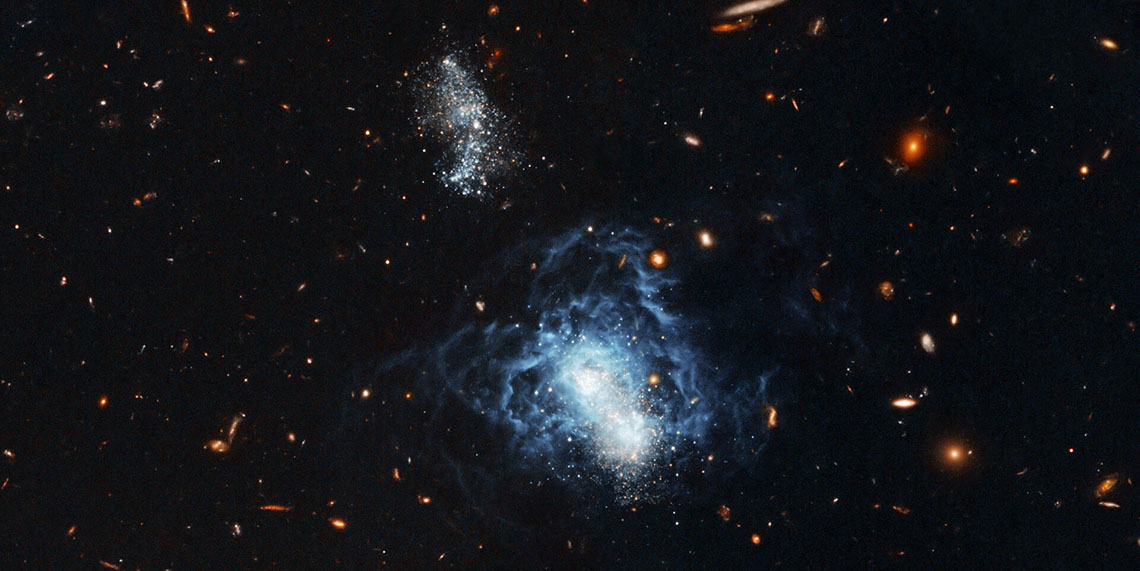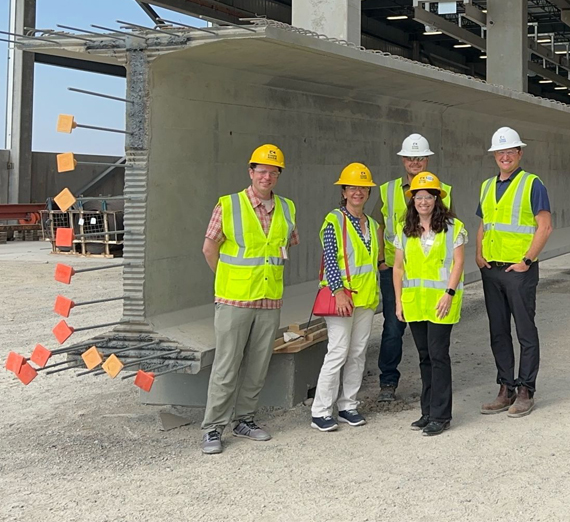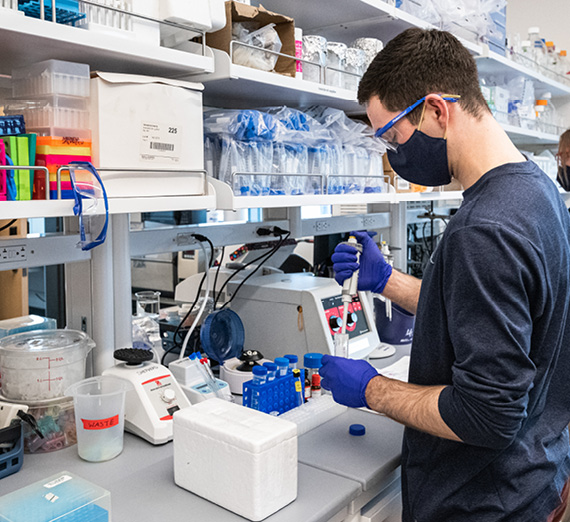Playing with Time and Space
A National Science Foundation Grant, the Big Bang, and a REALLY Big Telescope

Some projects just beg for a bigger tool.
For Gonzaga Professor Erik Aver’s research into the amount of helium produced in the minutes after the Big Bang, he knew he needed other scientists to collaborate with, and students to analyze data. But first and foremost, he needed the ability to observe roughly 40 galaxies and the stars that formed in those galaxies millions upon millions of years ago.
Enter the Large Binocular Telescope.
The structure on Mount Graham in southern Arizona is the second-largest optical telescope for astronomy in North America, and a new grant from the National Science Foundation will allow Aver and his colleagues at the University of Minnesota and Ohio State University to gather data across many nights at the telescope to observe those 40 galaxies and see the differences in them – if the weather cooperates.
The Large Binocular Telescope in southern Arizona is the second-largest optical telescope for
astronomy in North America. Photo credit: NASA/Mohamed Osama AlNagdy
The three-year, nearly $800,000 grant (including almost $205,000 for the GU portion) for the project titled “Collaborative Research: A Better Measurement of the Primordial Helium Abundance” will help the team make the most accurate measurements to date of the amount of helium produced in the first minutes after the Big Bang.
The “primordial helium abundance,” Aver explained, is the name for the helium produced right after the Big Bang, when there were no atoms in existence due to the intense heat. But as the universe expanded and cooled, protons and neutrons eventually bonded together (a process called nuclear fusion) and formed helium. There was no oxygen, no carbon, no gold or iron – none of the now-everyday elements existed yet. They formed later out of the first generation of stars that were mostly made of helium and hydrogen.
Accurately measuring that amount of helium will help test models of new physics, which Aver said is one of the most important applications of the work they’ll be doing. Having an accurate measurement of that primordial helium abundance will act as a guardrail of sorts for scientists as they create new models to try to find answers to unanswered questions about the universe. Some models trying to help theoretical physicists explain, say, dark matter, might be ruled out based on the measurements Aver and his collaborators will find looking through the Large Binocular Telescope.
“There should be a trend in how much helium is in those galaxies,” Aver said, “proportional to how much star formation has been in those galaxies. So, by measuring a whole set of galaxies, the ones that have had more star formation and more history of star formation will have more helium, and we can analyze that set and figure out how much helium there was before there were any stars.”
“You kind of need different galaxies that have different amounts of helium, but have had different amounts of star formation, and then that allows you to extrapolate back. It’s called the primordial helium abundance because it means persisting from the beginning, the helium that was there before galaxies and stars and everything.”
With grant funds, Aver will hire two Gonzaga students each of the next three summers to help analyze the incredible amount of data the team will gather from the sessions at the Large Binocular Telescope. And having GU students work alongside him and his fellow researchers is one of the most rewarding aspects of earning this grant, Aver said.
“Part of why I wanted to be at Gonzaga is because I value those opportunities for mentorship experiences with students,” Aver said. “That’s rewarding. It’s different to have solved some problems in class; real research is very different. You’re not even exactly certain how to go about figuring it out.
“For students who are interested in that – even if they’re not interested in astrophysics or cosmology, just interested in being future researchers – getting that experience where you’re doing research, you don’t know the answer, you’re using all this data, you’re trying to figure it out. You’re even trying to figure out how to figure it out. It’s really rewarding, and the fact the grant allows us to support two different students each summer for three summers is very exciting.”
- Academics
- Student Life
- Alumni
- College of Arts & Sciences
- Academic Vice President
- Undergraduate Admissions
- University Advancement
- Physics
- News Center





